Related Research Articles
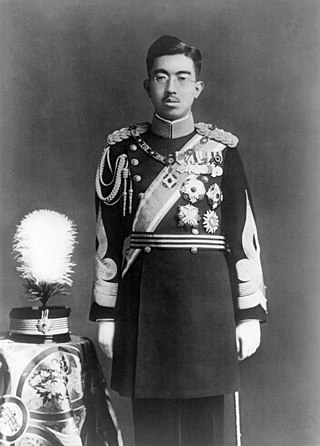
Hirohito, posthumously honored as Emperor Shōwa, was the 124th emperor of Japan, reigning from 1926 until his death in 1989. His reign of over 62 years is the longest of any historical Japanese emperor and one of the longest-reigning monarchs in the world.

Prince Fumimaro Konoe was a Japanese politician who served as prime minister of Japan from 1937 to 1939 and from 1940 to 1941. He presided over the Japanese invasion of China in 1937 and the breakdown in relations with the United States, which ultimately culminated in Japan's entry into World War II. He also played a central role in transforming his country into a totalitarian state by passing the State General Mobilization Law and founding the Imperial Rule Assistance Association by dissolving all other political parties.
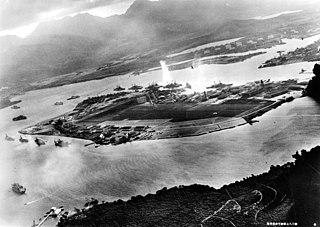
The attack on Pearl Harbor was a surprise military strike by the Imperial Japanese Navy Air Service upon the United States against the American naval base at Pearl Harbor in Honolulu, Hawaii, just before 8:00 a.m. on Sunday, December 7, 1941. The United States was a neutral country at the time; the attack led the U.S. to formally enter World War II on the side of the Allies the following day. The Japanese military leadership referred to the attack as the Hawaii Operation and Operation AI, and as Operation Z during its planning.
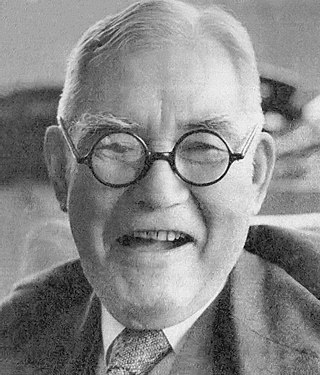
Kichisaburō Nomura was an admiral in the Imperial Japanese Navy and was the ambassador to the United States at the time of the attack on Pearl Harbor.

Osami Nagano was a Marshal Admiral of the Imperial Japanese Navy and one of the leaders of Japan's military during most of the Second World War. In April 1941, he became Chief of the Imperial Japanese Navy General Staff. In this capacity, he served as the navy's commander-in-chief in the Asia-Pacific theater of World War II until his removal in February 1944. After the war, he was arrested by the International Military Tribunal for the Far East but died of natural causes in prison during the trial.
Various conspiracy theories allege that U.S. government officials had advance knowledge of Japan's December 7, 1941, attack on Pearl Harbor. Ever since the Japanese attack, there has been debate as to why and how the United States was caught off guard, and how much and when American officials knew of Japanese plans for an attack. In September 1944, John T. Flynn, a co-founder of the non-interventionist America First Committee, launched a Pearl Harbor counter-narrative when he published a 46-page booklet entitled The Truth about Pearl Harbor, arguing that Roosevelt and his inner circle had been plotting to provoke the Japanese into an attack on the U.S. and thus provide a reason to enter the war since January 1941.
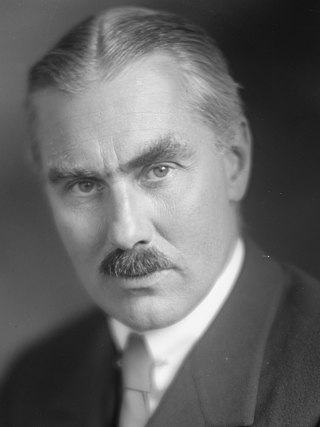
Joseph Clark Grew was an American career diplomat and Foreign Service officer. He is best known as the ambassador to Japan from 1932 to 1941 and as a high official in the State Department in Washington from 1944 to 1945. He opposed American hardliners, sought to avoid war, and helped to ensure the soft Japanese surrender in 1945 that enabled a peaceful American Occupation of Japan after the war.

Saburō Kurusu was a Japanese career diplomat. He is remembered now as an envoy who tried to negotiate peace and understanding with the United States while the Japanese government under Emperor Shōwa was secretly preparing the attack on Pearl Harbor.

The Allies, formally referred to as the United Nations from 1942, were an international military coalition formed during World War II (1939–1945) to oppose the Axis powers, led by Nazi Germany, the Empire of Japan, and the Kingdom of Italy. Its principal members by the end of 1941 were the "Big Four" - United Kingdom, United States, Soviet Union, and China.
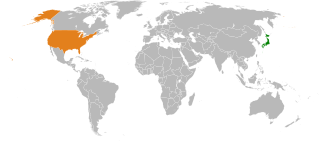
International relations between Japan and the United States began in the late 18th and early 19th century with the diplomatic but force-backed missions of U.S. ship captains James Glynn and Matthew C. Perry to the Tokugawa shogunate. Following the Meiji Restoration, the countries maintained relatively cordial relations. Potential disputes were resolved. Japan acknowledged American control of Hawaii and the Philippines, and the United States reciprocated regarding Korea. Disagreements about Japanese immigration to the U.S. were resolved in 1907. The two were allies against Germany in World War I.

The McCollum memo, also known as the Eight Action Memo, was a memorandum, dated October 7, 1940, sent by Lieutenant Commander Arthur H. McCollum in his capacity as director of the Office of Naval Intelligence's Far East Asia section. It was sent to Navy Captains Dudley Knox, who agreed with the actions described within the memo, and Walter Stratton Anderson.

The following events occurred in December 1941:
The government of the United Kingdom declared war on the Empire of Japan on 8 December 1941, following the Japanese attacks on British Malaya, Singapore, and Hong Kong on the previous day as well as in response to the bombing of the US fleet at Pearl Harbor.

A series of events led to the attack on Pearl Harbor. War between the Empire of Japan and the United States was a possibility each nation's military forces had planned for after World War I. The expansion of American territories in the Pacific had been a threat to Japan since the 1890s, but real tensions did not begin until the Japanese invasion of Manchuria in 1931.
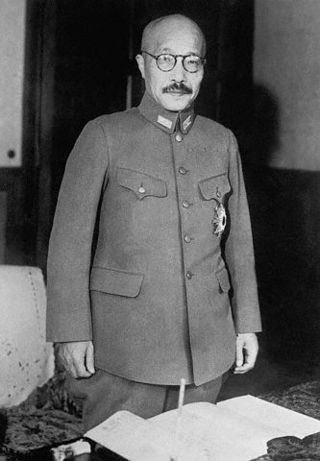
Japan's attack on Pearl Harbor took place on December 7, 1941. The United States military suffered 19 ships damaged or sunk, and 2,403 people were killed. Its most significant consequence was the entrance of the United States into World War II. The US had previously been officially neutral but subsequently entered the Pacific War, and after Italy's declaration of war and Germany's declaration of war shortly after the attack, the Battle of the Atlantic and the European theatre of war. Following the attack, the US interned 120,000 Japanese Americans, 11,000 German Americans, and 3,000 Italian Americans.

On December 8, 1941 at 12:30 PM ET the United States Congress declared war, on the Empire of Japan in response to its surprise attack on Pearl Harbor and subsequent declaration of war the prior day. The Joint Resolution Declaring that a state of war exists between the Imperial Government of Japan and the Government and the people of the United States and making provisions to prosecute the same was formulated an hour after the Infamy Speech of President Franklin D. Roosevelt. Following the U.S. declaration, Japan's allies, Germany and Italy, declared war on the United States, bringing the United States fully into World War II. The Japanese government had originally intended to deliver the declaration thirty minutes before the attack, but the Japanese embassy in Washington took too long to decode the 5,000-word document.

On 11 December 1941, four days after the Japanese attack on Pearl Harbor and the United States declaration of war against the Japanese Empire, Nazi Germany declared war against the United States, in response to what was claimed to be a series of provocations by the United States government when the U.S. was still officially neutral during World War II. The decision to declare war was made by Adolf Hitler, apparently offhand, almost without consultation. It has been referred to as Hitler's "most puzzling" decision of World War II. Publicly, the formal declaration was made to American Chargé d'Affaires Leland B. Morris by German Foreign Minister Joachim von Ribbentrop in the latter's office. Later that day, the U.S. declared war on Germany, with Germany's action having eliminated any remaining meaningful domestic isolationist opposition to the U.S. joining the European war.

The attack on Pearl Harbor has received substantial attention in popular culture in multiple media and cultural formats including film, architecture, memorial statues, non-fiction writing, historical writing, and historical fiction. Today, the USS Arizona Memorial on the island of Oahu honors the dead. Visitors to the memorial reach it via boats from the naval base at Pearl Harbor. The memorial was designed by Alfred Preis, and has a sagging center but strong and vigorous ends, expressing "initial defeat and ultimate victory". It commemorates all lives lost on December 7, 1941.

The third presidential term of Franklin D. Roosevelt began on January 20, 1941, when he was once again inaugurated as the 32nd president of the United States, and the fourth term of his presidency ended with his death on April 12, 1945. Roosevelt won a third term by defeating Republican nominee Wendell Willkie in the 1940 United States presidential election. He remains the only president to serve for more than two terms. Unlike his first two terms, Roosevelt's third and fourth terms were dominated by foreign policy concerns, as the United States became involved in World War II in December 1941.
The foreign policy of the United States was controlled personally by Franklin D. Roosevelt during his first and second and third and fourth terms as the president of the United States from 1933 to 1945. He depended heavily on Henry Morgenthau Jr., Sumner Welles, and Harry Hopkins. Meanwhile, Secretary of State Cordell Hull handled routine matters. Roosevelt was an internationalist, while powerful members of Congress favored more isolationist solutions in order to keep the U.S. out of European wars. There was considerable tension before the Attack on Pearl Harbor in December 1941. The attack converted the isolationists or made them irrelevant. The US began aid to the Soviet Union after Germany invaded it in June 1941. After the US declared war in December 1941, key decisions were made at the highest level by Roosevelt, Britain's Winston Churchill and the Soviet Union's Joseph Stalin, along with their top aides. After 1938 Washington's policy was to help China in its war against Japan, including cutting off money and oil to Japan. While isolationism was powerful regarding Europe, American public and elite opinion strongly opposed Japan.
References
- Costello, John, The Pacific War 1941-1945 (New York: William Morrow, 1982) ISBN 0-688-01620-0
- Dallek, Robert. Franklin D. Roosevelt and American foreign policy, 1932-1945 (Oxford University Press, 1979)
- Langer, William L. and S. Everett Gleason. The undeclared war, 1940-1941 (1953), highly detailed semi-official US government history, esp pp 871–901
- Gordon W. Prange, At Dawn We Slept (McGraw-Hill, 1981), Pearl Harbor: The Verdict of History (McGraw-Hill, 1986), and December 7, 1941: The Day the Japanese Attacked Pearl Harbor (McGraw-Hill, 1988). This monumental trilogy, written with collaborators Donald M. Goldstein and Katherine V. Dillon, is considered the authoritative work on the subject.
- Peter Wetzler, Hirohito and War, University of Hawaii Press, 1998 ISBN 0-8248-1925-X
- Beard, Charles A. President Roosevelt and the Coming of the War 1941 (Yale UP, 1948)
- Fish, Hamilton. Tragic Deception: FDR and America's Involvement in World War II (Devin-Adair Pub, 1983) ISBN 0-8159-6917-1
- Morgenstern, George Edward. Pearl Harbor: The Story of the Secret War (The Devin-Adair Company, 1947) ISBN 978-1-299-05736-4.
- Robert A. Theobald, Final Secret of Pearl Harbor (Devin-Adair Pub, 1954) ISBN 0-8159-5503-0 ISBN 0-317-65928-6